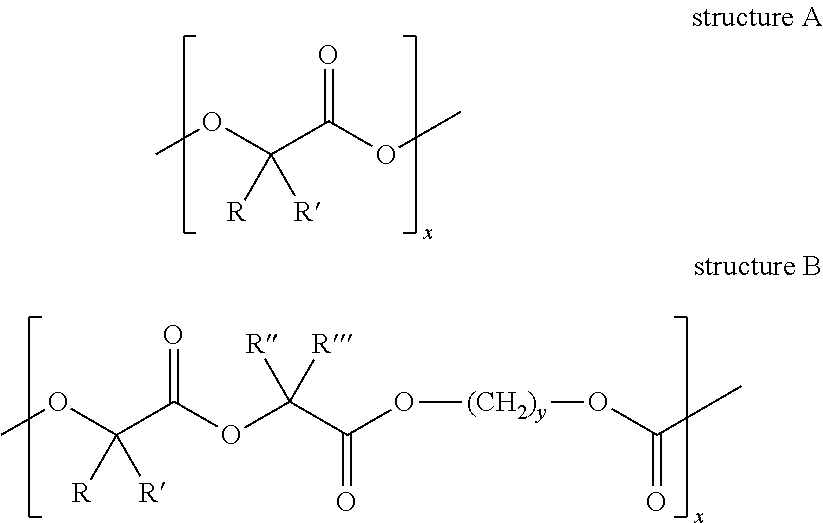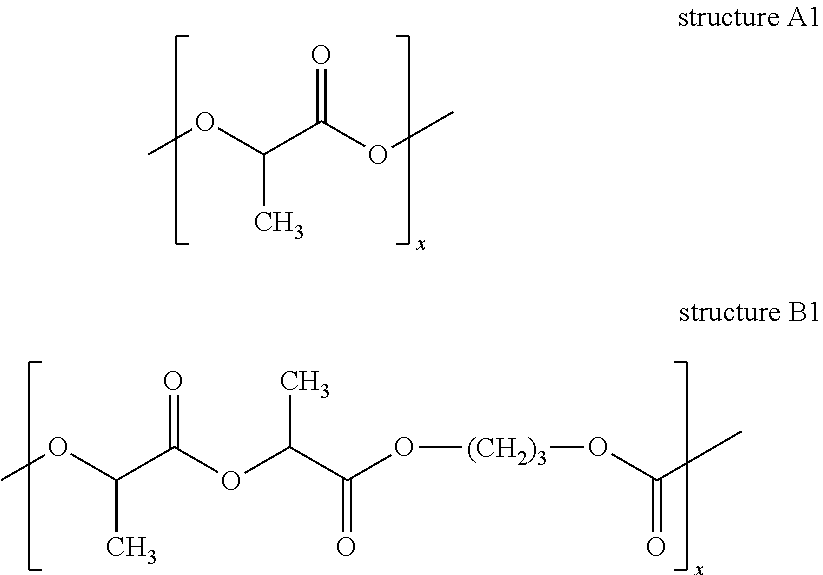Implantable products comprising nanoparticles
a technology of nanoparticles and nanoparticles, which is applied in the direction of prosthesis, application, peptide/protein ingredients, etc., can solve the problems of stress on patients, tumor cells still remaining inside the body, and rising fas
- Summary
- Abstract
- Description
- Claims
- Application Information
AI Technical Summary
Benefits of technology
Problems solved by technology
Method used
Image
Examples
example 1a
General Instructions for the Production of a Nanoparticle Suspension / Solution for Impregnation or Spraying or Dipping of the Carrier
[0132]A solution of 0.23 Mol FeCl2 and 0.46 Mol FeCl3 in 1 l of water is degassed by nitrogen. Thereupon as much of 5 M NaOH is added within 20 minutes that a pH-value of 11.5 is reached. The resulting precipitate is heated to 65° C. for ten minutes and subsequently will be cooled to room temperature within five minutes. After that, the precipitate is suspended in deionized and degassed water until a pH-value of the washing solution of 9 will be reached. The precipitate is suspended in water and the suspension is adjusted to a pH-value of 6 with glacial acetic acid. 10 percent by volume of a 30 percent by weight aqueous H2O solution are added to the resulting suspension which after that will be stirred until termination of gas development. Thereupon the suspension will be diluted with water to a content of solid iron oxide of 5 percent by weight.
example 1b
Without Oxidation / with Air Gassing
[0133]0.1 mol FeCl3×6H2O and 0.2 mol FeCl3 (water-free), 50 g sodium acetate and 195 g diaminohexane in 900 ml ethylene glycol were dissolved for the production of iron oxide nanoparticles in ethylene glycol and were heated to 60° C. for 1 hour. Then, the solution was heated to boiling point within 30 minutes. The boiling temperature was maintained for six hours. The resulting dispersion was cooled slowly to room temperature.
[0134]The particles were washed three times with a mixture of ethanol and water.
[0135]After that, the particles were resuspended in 900 ml ethylene glycol and were gassed with atmospheric oxygen. The suspension was heated to the boiling point of ethylene glycol and was kept at this temperature for 24 hours.
[0136]After cooling the particles were washed with water / ethanol and suspended in water.
[0137]These particles were coated in an analogous manner to example 1G.
example 1c
With Oxidation / with Air Gassing
[0138]0.1 mol FeCl3×6H2O and 0.2 mol FeCl3 (water-free), 50 g sodium acetate and 195 g diaminohexane in 900 ml ethylene glycol were dissolved for the production of iron oxide nanoparticles in ethylene glycol and were heated to 60° C. for one hour. Then, the solution was heated to boiling point within 30 minutes. Boiling temperature was maintained for six hours. The resulting dispersion was cooled slowly to room temperature.
[0139]The particles were washed three times with a mixture of ethanol and water.
[0140]After that, the particles were resuspended in 900 ml ethylene glycol and gassed with atmospheric oxygen. The suspension was heated to the boiling point of ethylene glycol and was kept at this temperature for 24 hours.
[0141]After cooling the particles were washed with water / ethanol and suspended in 900 ml 1 M HNO3. Then, 450 ml of 0.7 M ferrous nitrate solution (Fe(NO3)3×9 H2O) were added and boiled under reflux for one hour (100° C.). The particles ...
PUM
| Property | Measurement | Unit |
|---|---|---|
| frequency | aaaaa | aaaaa |
| frequency | aaaaa | aaaaa |
| frequency | aaaaa | aaaaa |
Abstract
Description
Claims
Application Information
 Login to View More
Login to View More - R&D
- Intellectual Property
- Life Sciences
- Materials
- Tech Scout
- Unparalleled Data Quality
- Higher Quality Content
- 60% Fewer Hallucinations
Browse by: Latest US Patents, China's latest patents, Technical Efficacy Thesaurus, Application Domain, Technology Topic, Popular Technical Reports.
© 2025 PatSnap. All rights reserved.Legal|Privacy policy|Modern Slavery Act Transparency Statement|Sitemap|About US| Contact US: help@patsnap.com


